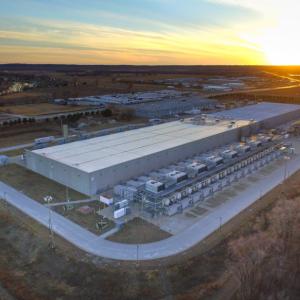H5N1 Avian Flu: What Canadians Need to Know
Avian flu is the latest scary disease making the news.
In the past few weeks, it’s turned up in roughly a dozen dairy herds in six US states. As per its name, it is typically found in birds, but has also been known to infect about 200 mammal species, often through the consumption of infected birds. Its presence in cattle appears to be a new phenomenon, however, leading to concern both for the integrity of the world’s food supply and for the increase in risk of transmission to humans.
Avian flu is not like the seasonal flu that infects about a billion people every year, and kills close to a million. It’s much worse. Avian flu’s strains are divided into two types based on whether their pathogenicity is low (LP) or high (HP). The most well-known HPAI (Highly Pathogenic Avian Influenza) strain is called H5N1.
This past week the U.S. CDC announced what is likely the very first case of a person being infected from a mammal, in this case a dairy cow. This is the second ever instance of human H5N1 infection in the USA and it has garnered the rapt attention of infectious disease scientists and public health officials across the world.
To-date there have been 887 known cases of human H5N1 infection globally, with the great majority in Southeast and East Asia. But of those, 462 died, resulting in a horrifying CFR (case fatality rate) of 52%. It is important to note, however, that there have also likely been undetected mild cases that, when factored in, would bring the estimate down significantly. Epidemiologists call this modified fatality estimate the IFR, or infection fatality rate. The IFR is the true risk of death and is always lower than the CFR.
For comparison, the pre-vaccine IFR for COVID-19 is thought to be around 1%, whereas that of seasonal flu is probably 0.1% to 0.5%. In the event of a pandemic, H5N1’s IFR would be much less than the current 52% estimate. But it would still be considerably higher than that of COVID or seasonal flu, with some experts projecting a true rate of 14-33%. That is still a frighteningly large number.
So, if a human outbreak of H5N1 were to become another full-on pandemic, it would be deadly serious, not only to our healthcare system, but frankly to all corners of society. And it would be at a time when hospital emergency rooms are already stressed to their breaking point, with doctors and nurses leaving their professions in droves.
Canada has seen only one human case of H5N1, an individual who likely contracted it while travelling in China, and who later died from it. While almost all human cases globally have been the result of animal contact, there have been a handful of suspected instances of human-to-human transmission.
The fear, though, is that the virus will adapt and learn how to move efficiently from person to person, and that we are then faced with sustained human transmission. An unlucky mutation might do the trick, in which case the world will be staring down the barrel of a new pandemic, one that might challenge COVID in its severity and disruption.
But that mutation has not happened yet. So, the immediate human threat is to farm workers in close proximity to infected animals. At this stage it’s vitally important for public health to keep close watch on those individuals and their animal charges.
It is not believed that we can contract H5N1 from eating infected meat, so long as that meat has been fully cooked. Similarly, pasteurisation should render any infected milk safe to consume. It’s good advice to follow general safe food handling practices, such as handwashing and keeping poultry, meat, and egg products separate from other food products to avoid cross contamination. These practices are a good idea even when HPAI isn’t a prevailing concern.
The seasonal influenza vaccine that 43% of Canadian adults received last year does not protect against HPAI. But there are several avian flu vaccines licensed for humans, a couple of which have been stockpiled by the US government, just in case. None of these is commercially available.
There do exist commercially available H5N1 vaccines for animals, though, which are used strategically for poultry in countries at highest risk. It is likely that poultry in North America and Europe will be immunised soon.
Scientists are monitoring the incidence of H5N1 closely. This is not a novel disease, as we’ve studied it for decades. While it is much deadlier than COVID, it is not nearly as contagious, and vaccines exist for both animals and humans, based on established and well-tested technologies.
In short, we have both the tools and the knowledge to contain H5N1 if it makes the leap to the general human population. It’s certainly something to keep an eye on, but not something for the general public to lose sleep over. That’s my job.
Dr. Raywat Deonandan is a Global Health Epidemiologist and Professor at the University of Ottawa. He is a former Chief Scientist with the Canadian federal government, and an award-winning writer. Contrary to accusations from Twitter bots, he does not receive cheques from Klaus Schwab, Pfizer, or Bill Gates. Though that would be nice.









